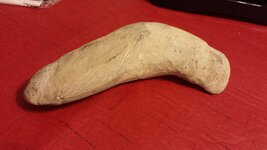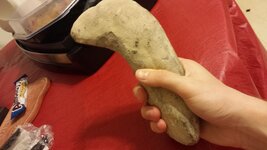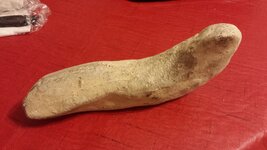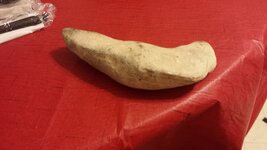camsterman48
Newbie
- Jun 14, 2015
- 3
- 3
- Primary Interest:
- All Treasure Hunting




This stone was found in the late 1950's on the ground at a fair in the Southern region of Kentucky. Has been kept my possession for at least 50 years now, and I'm curious to find out the purpose of this tool. Some details the pictures missed, a sharp point on the top end of the rock, a distinct thumb impression on one side, as though it was held often. A very blunt, flat side beneath the point, and the very distinct sharp marks carved into the opposite bottom end of the tool. It measures around 8' long, and 3' wide. Thank you for any answers that you can offer, have a blessed day.
Upvote
1




















